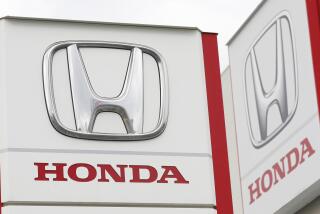Stick-Shift Car Chalks Up Three Strikes in a Clutch
- Share via
Question: After only 56,000 miles, I have put in three clutches on my 1986 Nissan Pulsar. Each clutch has been installed by a different mechanic, so I don’t think the problem is with the installation. I have found that premature wear on a clutch is usually blamed on the driver, but I have been driving stick shifts for 25 years without such an experience. All Nissan says is that the car is no longer under warranty. Do you have any ideas?--L.B.
Answer: Nissan claims that they do not have a systemic problem with the Pulsar clutch. It’s possible that your clutch cable is binding, which may be causing the clutch to slip. That’s a long shot, though.
Another possibility is that the cruise control on the car has an improperly installed cancel switch, which can cause a slight pressure on the clutch plate. That’s another long shot.
The car possibly just eats clutches because of the way it was designed.
Q: When the gas tank in my 1984 Honda Accord gets below half full, it seems to starve the engine at low speed. This does not happen with a full tank. When the gas tank cap is removed, there is a sudden rush of air into the tank. Is this normal? Do you have any suggestions about the problem?--L.V.
A: The rush of air that you hear is out of the tank, rather than into the tank. The tank is vented to a charcoal canister to prevent fumes from entering the atmosphere, and a slight amount of pressure in the tank is normal.
The poor fuel performance might be caused by a number of problems. You might want to check to be sure that the fuel gauge is working properly. It’s possible that the fuel gauge is registering that the tank is half full when it is almost out of gas. A related problem could be that the fuel pick-up tube was installed incorrectly or damaged in a previous repair job, preventing the fuel from reaching the engine when the tank is half empty.
In addition, the tank cap may not be fitting properly, preventing the tank from operating at the correct pressure. Another potential problem could be in a bleed valve on top of the tank; this valve vents the tank when an over-pressure condition occurs.






